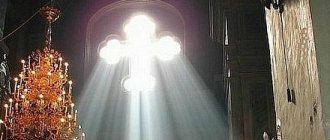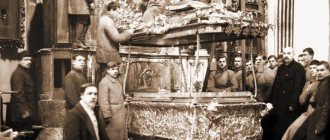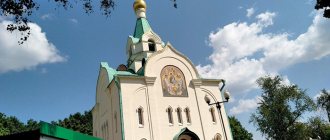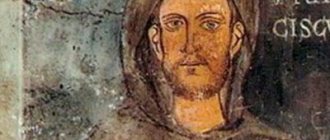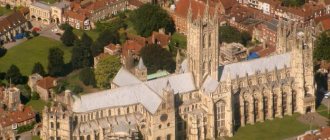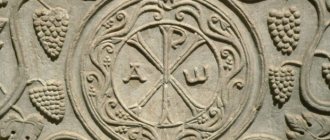Decree on Freedom to Rob the Church
On January 20, the day after the announcement of Patriarch Tikhon’s message with an anathema to the Bolsheviks (in connection with their attack on the Alexander Nevsky Lavra), a meeting of the Council of People’s Commissars was convened in Petrograd closer to night. On it, People's Commissar of Justice I.3. Steinberg
and the head of the department of the People's Commissariat of Justice
M. Reisner
presented the draft decree “On freedom of conscience, church and religious societies.” Taking into account a number of Lenin’s amendments and additions, the decree was adopted on this date, and the next morning, January 21, its text was published in the newspapers Pravda and Izvestia. (Officially, for some reason, it was dated January 23/February 5 as the Decree “On the separation of church from state, and schools from church,” so we put it on the calendar for this date.)
Formally, this decree was about when, according to Lenin, “the church was in serfdom from the state, and Russian citizens were in serfdom from the state church, when medieval, inquisitorial laws existed and were applied, persecution for faith or unbelief, which raped a person’s conscience ..." The Decree o, that is, eliminated the previously existing division of religious organizations into “dominant” (Orthodoxy), “tolerant” (Muslim, etc.) and “persecuted” (Judaism) - they all became equal “private societies” that are formed on a voluntary basis . At the same time, the decree also guaranteed the right not to have religious beliefs and to be an atheist.
In fact, this decree was directed against the “dominant” Orthodox Church and meant depriving it of all property created over the previous millennium by our ancestors: “ No church or religious societies have the right to own property. They do not have the rights of a legal entity
"
From now on, legal owners could only receive for use buildings and objects intended specifically for liturgical purposes, according to special decrees of the authorities.
The Local Council regarded this decree as “a malicious attack on the entire structure of life of the Orthodox Church and an act of open persecution against it” and called on believers to follow the call of the Patriarch. The Patriarch's message of January 19, the resolution and appeal of the Council were widely distributed throughout the country in various brochures, magazines, newspapers, leaflets and other publications of the Local Council, diocesan and church councils, and in sermons of the parish clergy. Here is one of the leaflets - “Anathema of Patriarch Tikhon to the Bolsheviks”:
“The Patriarch of Moscow and All Russia in his message... drew the spiritual sword against the monsters of the human race - the Bolsheviks and anathematized them. The head of the Russian Orthodox Church conjures all her faithful children not to enter into any communication with these monsters... Parents! If your children are Bolsheviks, demand from the authorities that they renounce their errors, that they repent of their great sin, and if they do not listen to you, renounce them. Wives, if your husbands are Bolsheviks and persist in serving Satan, leave your husbands, save yourself and your children from the infection that destroys the soul. The Church of Christ calls you to defend the Orthodox faith... Repent, with fervent prayer call upon the help of the Lord Almighty and shake off the “hands of strangers” - the age-old enemies of the faith of Christ, who have declared themselves self-proclaimed “people's power.”
In January–April 1918, a wave of resistance to attempts to confiscate church property swept across Russia. Mass religious processions and services were organized in squares and public places in support of the Church. Collective petitions were sent to the government with threats of popular resistance during the implementation of the Decree. In March 1918, a delegation from the Local Council visited the Council of People's Commissars and, on behalf of one hundred million Russian population, demanded the abolition of the decree.
The Bolsheviks responded by intensifying repression against believers. Religious processions were shot in Tula, Kharkov, Voronezh, Shatsk (Tambov province). A crowd of believers was shot during the requisition of the property of the Belogorsk metochion (Perm diocese). On January 25, Metropolitan Vladimir was killed in Kyiv. (The Local Council later established on this Sunday or the following Sunday the annual prayerful commemoration of “all the confessors and martyrs who have fallen asleep in this fierce time,” which is now celebrated as the day of remembrance of the New Martyrs and Confessors of Russia). At the end of September the Church Council was dissolved. The diocesan house where he met for a year has been sealed. The documents and materials stored there were confiscated. Arrests, searches, confiscations, imprisonments, murders of clergy and active laity became widespread in the country; repressions were extended even to the Patriarch and his close assistants...
However, due to widespread popular resistance, it was impossible to immediately implement the decree; moreover, the position of the Jewish Bolshevik government was weakened by the creation of the White Army on the Don and uprisings in various cities. By the fall of 1918, many of the members of the Council joined the White movement. The outbreak of the civil war relegated the task of destroying the Church to a secondary place for the atheists, although the anti-Bolshevik sentiments of the clergy were reported in the weekly reports of the Cheka on the political situation in the country (they included a special section “Clergy”).
With the end of the civil war, the Bolsheviks again threw their forces into destroying the Church. Simultaneously with the announcement of the trade-liberal NEP (new economic policy), they dealt a new blow to the Church: a campaign began to open holy relics and confiscate church valuables in 1922 under the pretext of “fighting hunger.” This is stated in our calendar in the article “The War of Trotsky and Lenin against the Church.” (However, in those same years, a synagogue was built in Moscow in Maryina Roshcha, the construction of which was completed in 1926.)
PS. The Bolshevik decree of 1918 on the deprivation of the Church’s property has not yet been canceled - all churches are owned by the Russian state. In 2006, courts also denied church communities the right to return church buildings.
See also on this topic: Holy New Martyrs of Russia
.
Statement of the movement “Live without fear of the Jews!”: “Holocaust” and the Russian Holocaust
.
Permanent page address:
Leave your comment
« Previous entry
Decree “On the separation of the Church from the state and the school from the Church”
100 years ago, on January 23 (February 5), 1918, the decree “On the separation of the Church from the state and the school from the Church” was officially published, which then for 70 years served as a legal cover for discrimination against the Orthodox Church, and at the same time other religious communities, in our country.
Preparing a maternity leave
The background to the publication of this act is as follows: in November 1917, the rector of the Petrograd Church of the Transfiguration of the Lord in Koltov, priest Mikhail Galkin, after a visit to Smolny and a 10-minute conversation with V.I. Lenin addressed this institution with a written complaint that he lived “with the heavy stone of complete disbelief in the policies of the official Church.” In this appeal, Galkin accused the clergy of unwillingness to establish good relations with the Soviet government and proposed radically changing the legal status of the “dominant” Church, for which he recommended introducing civil marriage, the Gregorian calendar, nationalizing church property and depriving the clergy of privileges. To implement these ideas, he offered his services to the government. This project of his came to the attention of the Soviet leaders, and on December 3, 1917, it was published in the Pravda newspaper.
One should not think that Galkin was the actual initiator of the decree, that similar ideas had not previously entered the minds of Bolshevik leaders, and he told them how to act in relation to the Church. On his part, it was just timely or even proactively expressed helpfulness: “What do you want? I’m ready for anything,” but for propaganda purposes it turned out to be convenient to publicize the radical anti-church project put forward by the priest. Subsequently, and very soon, already in 1918, Galkin publicly announced his renunciation and took up a profitable business at that time - propaganda of atheism, however, already under the pseudonym Gorev, and on January 1, 1919 he was admitted to the RCP (b). The later fate of this lover of 30 pieces of silver is not of particular interest in the present context.
The trial against the Hieromartyr Veniamin of Petrograd
After reading the letter from Metropolitan Veniamin of Petrograd, Lenin demanded that the preparation of the decree be speeded up
Be that as it may, on December 11, the Council of People's Commissars formed a commission to prepare a decree on the separation of the Church, which included People's Commissar of Justice P. Stuchka; People's Commissar of Education A. Lunacharsky; member of the board of the People's Commissariat of Justice P. Krasikov, who left a mark in history mainly as a prosecutor in the trial against the holy martyr Veniamin of Petrograd and the martyrs and confessors who suffered along with him; Professor of Law at Petrograd University M.A. Reisner - the father of the famous revolutionary Larisa Reisner - and Mikhail Galkin. On December 31, the Socialist Revolutionary newspaper Delo Naroda published the product of the hasty activities of this commission - a draft decree that declared freedom of conscience and provided for the introduction of state registration of acts of civil status, a ban on the teaching of religious disciplines in secular educational institutions, and the nationalization of all property of the Orthodox Church and other faiths. - with the future provision of religious communities with their confiscated churches for the use of worship in them - and, finally, the deprivation of all religious societies of the rights of a legal entity.
Newspaper "Delo Naroda"
The reform of church-state relations, including the separation of the Church from the state, judging by various private acts of the Provisional Government and public statements of the provisional ministers, was expected before the Bolsheviks came to power: on June 20, 1917, the Provisional Government issued a decree on the transfer of parochial schools and teachers' seminaries under the jurisdiction of the Ministry of Public Education; the law on freedom of conscience, published on July 14, proclaimed freedom of religious self-determination for every citizen upon reaching the age of 14, when children are still in school; On August 5, the Provisional Government abolished the Chief Prosecutor's Office and established the Ministry of Confessions. These acts were clearly aimed towards the creation of a non-confessional state, but the Soviet government completed the breaking of the centuries-old union of the Orthodox Church and the Russian state, begun by the Provisional Government.
The published project of separation with the confiscation of churches and all church property, with the deprivation of religious societies of the very right to own property, made a stunning impression on the church environment with its radicalism, although previously the prospects for organizing the relationship between the Church and the state were seen in a pessimistic way. This project was a kind of response from the Bolshevik elite to the “Definition on the Legal Status of the Church in the State” adopted the day before by the Local Council - a response that meant a categorical refusal to compromise with the Church.
The church's reaction to this project was expressed in a letter, which Metropolitan Veniamin of Petrograd then addressed to the Council of People's Commissars.
“The implementation of this project,” he wrote, “threatens great grief and suffering for the Orthodox Russian people... I consider it my moral duty to tell the people currently in power to warn them not to carry out the proposed draft decree on the confiscation of church property.” .
On the part of the Hieromartyr Benjamin, criticism was directed not against the act of secession itself, but mainly against the confiscation of churches and all church property, in other words, against the planned robbery of the Church. After reading this letter, Chairman of the Council of People's Commissars V.I. Lenin imposed a resolution demanding that the preparation of the final version of the decree be speeded up. There was no official response to the archpastor to his appeal from the Council of People's Commissars.
The government is in effect, although there is no decree yet
Without waiting for the official publication of the legal act on secession, the authorities began to implement the provisions of the published draft. They began by closing the churches of the court department - the Great Cathedral of the Winter Palace, the church of the Anichkov Palace, the palace temple in Gatchina, the Cathedral of Peter and Paul in Peterhof. On January 14, 1918, Deputy People's Commissar of State Property Yu.N. Flaxerman signed a decree abolishing the institution of the court clergy and confiscating the premises and property of the court churches. On January 16, an order was issued by the People's Commissariat for Military Affairs, by which military clergy of all confessions were dismissed from service, the department of military clergy was abolished, and the property and funds of military churches were subject to confiscation. By order of the Commissariat of Education, on January 3, 1918, the Synodal printing house was confiscated.
Archpriest Peter Skipetrov
On January 13, 1918, the authorities demanded that the brethren of the Alexander Nevsky Lavra leave the monastery and vacate its premises for use as an infirmary. The Lavra authorities agreed to place the wounded in the monastery, but refused to comply with the order that the monks leave the monastery. Six days later, on January 19, a detachment of sailors and Red Guards arrived at the Lavra with an order for the confiscation of property, signed by Commissioner A. Kollontai. But the sound of the alarm and calls to save the churches attracted many people, and the Red Guards were forced to flee from the Lavra. However, they soon returned and, threatening to open fire, tried to drive the monks out of the monastery. The people did not disperse, and the elderly Archpriest Peter Skipetrov, rector of the Church of the Holy Passion-Bearers Boris and Gleb, appealed to the rapists with a plea to stop and not desecrate the shrine. In response, shots were fired and the priest was mortally wounded. On January 21, a nationwide religious procession took place from all St. Petersburg churches to the Alexander Nevsky Lavra and then along Nevsky Prospect to the Kazan Cathedral. Metropolitan Benjamin addressed the people with a call for peace and served a memorial service for the deceased defender of the shrine, Archpriest Peter. The next day, in front of a large crowd of people, a host of priests led by Saint Benjamin and Bishops Procopius and Artemy held the funeral service for the Hieromartyr Peter Skipetrov in the church where he was rector.
“Come to your senses, madmen!”
“[Enemies of the Church] do not have the right to call themselves champions of the people’s good... for they act contrary to the people’s conscience.”
On January 19 (February 1), 1918, His Holiness Patriarch Tikhon issued an “Appeal” in which he anathematized the “madmen” - participants in bloody massacres of innocent people who raised their hands against church shrines and the servants of God:
“The most severe persecution has been brought against the holy Church of Christ... Holy churches are subjected to either destruction through shooting from deadly weapons (the holy cathedrals of the Moscow Kremlin), or to robbery and blasphemous insult (the Chapel of the Savior in Petrograd); the holy monasteries revered by the believing people (like the Alexander Nevsky and Pochaev Lavras) are seized by the godless rulers of the darkness of this age and declared some kind of supposedly national property; schools that were supported by the funds of the Orthodox Church and trained pastors of the Church and teachers of the faith are recognized as unnecessary and turn either into schools of unbelief, or even directly into breeding grounds of immorality. The property of Orthodox monasteries and churches is taken away under the pretext that it is the people's property, but without any right and even without the desire to take into account the legitimate will of the people themselves... And, finally, the government, which promised to establish law and truth in Rus', to ensure freedom and order, shows everywhere there is only the most unbridled self-will and continuous violence against everyone and, in particular, against the holy Orthodox Church.”
Patriarch Tikhon and Metropolitan Veniamin (Kazansky) in Petrograd in 1920
Despite the harsh expressions used by the Patriarch, the message contains no judgments of a political nature, no assessments of the new state system from the point of view of its political expediency; it expresses only concern for the position of the Church and condemnation of bloody riots. The appeal called for non-violent defense of the Church:
“The enemies of the Church are seizing power over her and her property by the force of deadly weapons, and you oppose them with the power of faith of your nationwide cry, which will stop the madmen and show them that they have no right to call themselves champions of the people's good, builders of a new life at the behest of the people's mind, for they even act directly contrary to the people’s conscience.”
The appeal ended with a stern warning:
“Come to your senses, madmen, stop your bloody reprisals. After all, what you are doing is not only a cruel deed: it is truly a satanic deed, for which you are subject to the fire of Gehenna in the future life - the afterlife and the terrible curse of posterity in the present life - earthly. By the authority given to us by God, we forbid you to approach the mysteries of Christ, we anathematize you, if only you still bear Christian names and although by birth you belong to the Orthodox Church.”
The Patriarch anathematizes not the Soviet system, as many contemporaries understood this document, as well as later church and non-church historians, but the participants in the massacres of innocent people, without in any way defining their political affiliation.
On January 22, the Local Council, which resumed its activities the day before after the Christmas holidays, first discussed the Patriarch’s “Appeal” and adopted a resolution approving its content and calling on the Orthodox people to “unite now around the Patriarch, so as not to allow our faith to be desecrated.”
Issuance of the decree and its contents
Lenin replaced the words: “Religion is a private matter for every citizen” with: “The Church is separated from the state”
Meanwhile, on January 20, the Council of People's Commissars reviewed the already published draft decree, to which Lenin made a number of amendments, so that later in Soviet journalism this act was called the Lenin decree, which was probably intended to endow it with an aura of a kind of “sacredness.” Lenin's amendments tended to tighten his provisions. Thus, he replaced the wording of the 1st article of the project: “Religion is a private matter of every citizen of the Russian Republic” with: “The Church is separated from the state,” which gave rise to a later change in the very name of this document. In the first edition it was different and rather neutral: “Decree on freedom of conscience, church and religious societies.” To the 3rd article, which stated: “Every citizen can profess any religion or not profess any. All legal deprivations associated with the confession of any faith or non-profession of any faith are abolished,” Lenin added as a note the following provision: “From all official acts, any indication of the religious affiliation or non-belonging of citizens is eliminated.” He also owns part of the text of Article 13, in which all the property of church and religious societies is declared national property, namely: “Buildings and objects intended specifically for liturgical purposes are given, according to special decrees of local or central state authorities, for free use of the respective religious societies.”
The Council of People's Commissars approved the final text of the document. This act was signed by members of the government led by their chairman: Lenin, Podvoisky, Algasov, Trutovsky, Schlikhter, Proshyan, Menzhinsky, Shlyapnikov, Petrovsky and the manager of the Council of People's Commissars, Bonch-Bruevich. On January 21, the decree was published in the newspapers Pravda and Izvestia, and two days later, on January 23, it was published by the official body of the Council of People's Commissars, the Newspaper of the Workers' and Peasants' Government. This date is generally considered to be the date of publication of the decree, but it received the final version of its name a little later - on January 26, when it was published in the 18th issue of the “Collection of Legislations of the RSFSR” with the title “On the separation of the church from the state and the school from the church,” reproducing the text of the first and last articles of the document.
The decree declared, in particular, the following provisions:
"2. Within the Republic, it is prohibited to issue any local laws or regulations that would restrict or restrict freedom of conscience, or establish any advantages or privileges on the basis of the religious affiliation of citizens... 4. The actions of state and other public legal social institutions are not accompanied no religious rites or ceremonies. 5. The free performance of religious rites is ensured insofar as they do not violate public order and are not accompanied by encroachments on the rights of citizens of the Soviet Republic. Local authorities have the right to take all necessary measures to ensure public order and security in these cases. 6. No one can, citing their religious views, avoid fulfilling their civil duties. Exceptions from this provision, subject to the condition of replacing one civil duty with another, are allowed in each individual case by decision of the people's court. 7. The religious oath or oath is canceled. In necessary cases, only a solemn promise is given. 8. Civil status records are maintained exclusively by civil authorities: departments for registering marriages and births.”
Basically, these norms corresponded to those that were in force at that time in some Western countries: the USA, France, Switzerland, and have now entered the legal system of a number of other countries in different parts of the world. The fundamental novelty of the Soviet, or, as it was usually called, Lenin’s decree lay in its last articles:
"12. No church or religious societies have the right to own property. They do not have the rights of a legal entity. 13. All property of church and religious societies existing in Russia is declared national property.”
The Orthodox Church was separated from the state, but did not receive the rights of a private religious society and, like all religious societies, was deprived of the right to own property, as well as the rights of a legal entity. To a certain extent, a similar rule is contained in French legislation: the act of 1905, which proclaimed the final separation of the church from the state and the school from the church, legitimized the previously administratively carried out nationalization of church property, including the churches themselves, which were transferred for use to associations of religious citizens , but these associations, in other words, communities or parishes, were not, unlike the Soviet decree on separation, deprived of the rights of a legal entity and, accordingly, the right to continue to build and own churches. Thus, the 12th and 13th articles of the Soviet decree on separation were of an unprecedentedly draconian nature in relation to the Church.
Article 9 of the decree, according to which “the school is separated from the church,” is also discriminatory, due to the fact that it was accompanied by the following provision:
“Teaching religious doctrines in all state and public, as well as private educational institutions where general education subjects are taught, is not permitted. Citizens may teach and study religion privately.”
If, again, we compare this provision with the corresponding norm of French legislation, which pursues the principle of “separation” with particular radicalism, then it, while prohibiting the teaching of religion in public educational institutions, allows it in public and private secondary and higher schools, including in schools established and administered by the Catholic Church and other religious societies.
Article 10 of the Soviet decree of 1918 is not directly discriminatory, but frankly unfriendly:
“All ecclesiastical and religious societies are subject to the general provisions on private societies and unions and do not enjoy any benefits or subsidies either from the state or from its local autonomous and self-governing institutions.”
Article 11 of the decree, namely its final part, is not without some ambiguity:
“Forcible collection of fees and taxes in favor of church and religious societies, as well as measures of coercion or punishment on the part of these societies over their fellow members, are not permitted.”
The fact is that subsequently, at a time of confrontation between the canonical Church and the renovationists and self-saints, the punishments applied by the church authorities in relation to schismatics were often interpreted by the civil authorities as sanctions that contradicted the prohibition of applying punishments by religious societies in relation to their fellow members, and served as the basis for judicial persecution or extrajudicial, administratively imposed, punitive measures.
By a decree of 1918, the Orthodox Church was excluded from the list of subjects of civil law on the territory of the Soviet state. This decree not only marked the rupture of the centuries-old union of Church and state, but also served as a legal preparation for the confiscation of church values, the closure of monasteries and theological schools, unlawful trials and reprisals against clergy and pious laity.
The Orthodox clergy and conscientious laity, to put it mildly, greeted the very act of separation of Church and state without enthusiasm, since it broke with the tradition of their close union, but the discriminatory articles of the decree on separation caused particular concern and anxiety in church circles. Well-founded fears arose that its implementation would make even the relatively normal life of parishes, monasteries and theological schools impossible.
The publication of this decree stemmed from the Bolshevik elite’s awareness of the irreconcilable ideological antagonism of the atheistic worldview, which many of the Bolsheviks then professed with fanatical, quasi-religious zeal, and religion, especially the Christian faith, and in view of the Orthodox confession of the majority of the population of the country they captured, in the Orthodox Church they they saw their main enemy, and they were ready to fight him not only in the ideological field, but by any means. In an ideocratic state, discrimination against those who hold a worldview opposite to that to which those in power were committed is an understandable phenomenon, but it was an extremely unsuccessful policy, because it created a deep split in society, which in the long term doomed the regime to inevitable defeat. War was declared by issuing a decree on the Orthodox Church, and the Church then accepted this challenge.
The fruits of maternity leave
On January 25, 1918, a day after the official publication of the decree, the Local Council issued its brief but quite categorical “Resolution regarding the decree of the Council of People’s Commissars on the separation of Church and state”:
"1. The decree on the separation of Church and state issued by the Council of People's Commissars represents, under the guise of a law on freedom of conscience, a malicious attack on the entire system of life of the Orthodox Church and an act of open persecution against it. 2. Any participation both in the publication of this legislation hostile to the Church and in attempts to put it into practice is incompatible with belonging to the Orthodox Church and brings upon the guilty persons punishment up to and including excommunication from the Church (in accordance with the 73rd canon of saints and the 13th canon VII Ecumenical Council)".
The council resolution was announced in the churches. Until 1923, the hierarchy of the Russian Orthodox Church in its acts did not comply with the provisions of the decree on separation, as well as with other acts of the Soviet government that were unlawful from an ecclesiastical point of view.
Processions of the cross, at which prayers were offered for the salvation of the Church, were dispersed by force by the authorities
A wave of religious processions swept through the cities and villages of Russia at that time, at which prayers were offered for the salvation of the Church. Religious processions took place in Moscow, Nizhny Novgorod, Odessa, Voronezh and other cities. They did not go peacefully everywhere. In Nizhny Novgorod, Kharkov, Saratov, Vladimir, Voronezh, Tula, Shatsk, Vyatka, religious processions organized without the permission of local authorities caused clashes that led to bloodshed and death. In Soligalich, mass executions of participants in the religious procession took place several days after it took place. In total, according to official Soviet sources, from January to May 1918, attempts by believers to protect church property led to the death of 687 people.
Procession of the Cross 1918
Meanwhile, the provisions of the ominous decree were specified and supplemented by instructions and orders arising from them or tightening them. On February 1 (February 14), 1918, for the first time in Petrograd, population registration began to be kept by the civil registration authority (ZAGS). Then registry offices began to open everywhere. Their formation was accompanied by the seizure of parish and diocesan documentation and its transfer to these institutions. On August 24, 1918, the People's Commissariat of Justice sent out “Instructions for the implementation of the decree of January 23, 1918,” which ordered local councils to, within two months, confiscate all church property and funds stored “in the cash registers of local churches and houses of worship, from church elders, treasurers, parish councils and collectives, from rectors of churches, from deans, from diocesan and district observers of parochial schools... in former spiritual consistories, in the capitals of diocesan bishops, in the Synod, in the Supreme Church Council, in the so-called “patriarchal treasury” . Temples and liturgical objects were allowed to be issued for use to “communities of believers” according to the inventory. Loans previously allocated for the teaching of religion in schools were ordered to be immediately closed, since “not a single state or other public law institution has the right to issue any sums of money to religion teachers, both for the present and for the period that has elapsed since January 1918.” time of the year."
A ban followed on teaching the Law of God in private, although this was allowed by decree
In February 1918, the People's Commissariat of Education abolished the positions of teachers of all religions. In August 1918, the People's Commissariat for Education demanded the closure of house churches at educational institutions. In the same month, all religious educational institutions were closed, their buildings were transferred to the jurisdiction of local councils. It was only allowed to open theological courses with church funds for the education of adults, but it was extremely difficult to use this permission due to an acute lack of funds. The expulsion of teachers of the law from secondary schools was followed by a ban on teaching the Law of God outside of school - in churches, as well as in private apartments and at home, although according to the text of the decree, teaching religion in private was allowed.
The decree on the separation of Church and state made it difficult for all religions and denominations to exist in the Soviet state, but it dealt a particularly heavy blow to the Orthodox Church, which in the past had been in close alliance with the state. However, the situation of some religious communities in the first years of Soviet power was regarded by these communities themselves as more favorable than it was before. Thus, in January 1919, the Council of People's Commissars of the RSFSR issued a decree “On exemption from military service for religious reasons,” according to which Mennonites, Doukhobors and Tolstoyans were exempted from military service. For some time, this benefit also extended to Baptists and Pentecostals.
Baptists greeted the publication of the decree on the separation of Church and state with approval. They were completely satisfied with the freedom of conscience declared by the decree, the removal of instructions on the religion of citizens from official documents, and the introduction of civil registration of acts of civil status. They critically perceived only one provision of the decree - the deprivation of religious organizations of property rights and rights of a legal entity. And yet, the first 12 years that passed after the decree was issued, the Baptists subsequently called their “golden age.” Over the years, the number of Baptist communities has grown many times. Mass repressions did not escape them until the 1930s.
The decree was in force in the Soviet state almost until the very end of its existence and was only declared invalid by a resolution of the Supreme Council of the RSFSR on October 25, 1990. Similar acts were then passed in other union republics on the eve of the collapse of the USSR.
Philosopher and publicist Vasily Vasilyevich Rozanov died
Discussion: 7 comments
- R.B.Dimitri:
02/06/2009 at 00:00“The state owns all the temples.” It would be more correct to note that the state owns churches that were not given to the Church, and even reserves the right of ownership for some that were given, transferring (but not returning) them to the Church on lease.
- Maria:
10/13/2009 at 00:00
Correct Decree. Very. What fellows the Bolsheviks were! It's a pity that there are religious fools everywhere now. How far we are now from the real freedom and happiness of 1917-1918!!!
- 1345:
02/25/2010 at 00:00
Stupid saints!!!
- Sergey :
10/11/2012 at 00:00
Tears well up when you read how Russian people died during the period of Jewish Bolshevik repression. “On it, People's Commissar of Justice I.3. Steinberg and the head of the People's Commissariat of Justice department M. Reisner presented the draft decree “On freedom of conscience, church and religious societies.” It is not for nothing that Patriarch Peter said: “...shake off the “hands of strangers” - the primordial enemies of the faith of Christ, who have declared themselves the self-proclaimed “people's power”.” But our modern communists will not understand this aspect of those events and continue to denigrate the Faith. How offensive it is that these “strangers” are still dividing the Russian people in relation to faith and continue to kill us, only with other methods. Russians, wake up!
- Vadim:
02/02/2018 at 20:31
From the series he came up with. Trump asks the adviser: “Why did the Jews go on a rampage in the Kremlin during Hanukkah?” Answer: “Papa blessed Gundyaev.”
- Kutepov:
02/03/2018 at 07:21
Communists, Satanists and other atheists now have one very popular meme in use, which they throw into any discussion about the restoration and construction of churches in Russia, both on TV and on the Internet. Like, they are building a temple again, it would be better if they built kindergartens, schools and hospitals. They are vigorously driving this idea into people's heads. At the same time, they do not state why they are building shopping centers, entertainment complexes, billion-dollar stadiums, like in St. Petersburg, palaces for tax inspectorates, courts and other government bodies, and other similar corrupt parasitic objects. The Reds consistently and Jesuitically, in their style, associate the lack of hospitals and kindergartens in public opinion with the construction of churches. In 1914, there were 54,174 Orthodox churches, 25,593 chapels, and 1,025 monasteries in Russia; in 1991, there were about 12,000 churches and 117 monasteries. The owner’s demands to eliminate any violations of his rights in accordance with the current legislation are unlimited, that is, the statute of limitations does not apply to such claims, therefore, all destroyed churches, according to the claims of the Russian Orthodox Church, must be restored by the Communist Party of the Russian Federation, as the legal successor of the CPSU. If for them a temple is just an inventory object, a legal entity and a property complex, then let them enter the legal field and understand what they did in their time in Russia, instead of speculating on their own atrocities and vandalism.
- R.B.Anatoly:
02/04/2018 at 04:43
To Messrs. “Mary” and Numbered: the more you realize the futility of your satanic efforts, the more atheistic hatred you have. I prayed for your souls. Kutepova: Yes, I am always surprised by modern huge and always almost empty stadiums. But they are “necessary” - what was stolen from the country and laundered must always be visible, materially and with “concern” for the people. Thieves in law cannot do without these grandiose, ridiculous structures. This is the ABC.
| Report by IV year undergraduate student Deacon Artemy Kokosh on December 11, 2021 at a church scientific conference dedicated to the 100th anniversary of the beginning of the persecution of the Russian Church. |
Attitude of the Local Council of 1917-1918 to the Decree on the separation of the Church from the state and the school from the Church
On December 31, 1917, a draft decree on the separation of Church and state was published in Russian newspapers.
Metropolitan Veniamin of Petrograd was one of the first to react to the draft decree. [1] On January 10, Vladyka sent an open letter to the Council of People’s Commissars: “The implementation of this project,” he wrote, “threatens great grief and suffering to the Orthodox Russian people... I consider it my moral duty to tell the people currently in power to warn them so that they did not implement the proposed draft decree on the confiscation of church property” [2]. There was no response to the letter - on the contrary, V.I. Lenin asked to hurry with the development of the decree. [3]
As you know, at this time the Cathedral was on Christmas holidays. However, taking into account all the atrocities occurring against the Church during the holidays, the Cathedral Council formed a Commission under the chairmanship of Archpriest. Alexander Rozhdestvensky to develop measures against the seizure of church property. [4]
At its first meetings on January 20 and 22, the Council discussed the unrest taking place in the country, in particular, the seizure of the Synodal Printing House, as well as the famous appeal of Patriarch Tikhon of January 19, 1918 [5]. The result of this discussion on January 22 was an instruction to two departments of the Council, taking into account the proposals of the previously created Commission, to develop a definition against the seizure of church property. Thus, on January 22, the Department on the Legal Status of the Church in the State and the Department on Church Property jointly began to develop the corresponding resolution of the Council.
In addition, it is interesting that already on January 22, Council participant M.V. On January 22, Glagolev tells the Council about the open lecture of the Bolshevik I.A. Spitsberg, which he visited. During this lecture, in particular, it was announced that a decree would soon be issued on the closure of all churches and the confiscation of all religious institutions.
The decree on the separation of the Church from the state and the school from the Church was published on January 23 in the Newspaper of the Provisional Workers' and Peasants' Government. [6] On this day, the joint work of two specialized departments of the Council is already underway, so the question of the Council’s attitude to the Decree is also included in the work of these departments. The entirety of the Council considers the Decree itself and the proposals of the two departments at its next meeting - January 25. [7]
The proposals of the departments are reported by Prince E.N. Trubetskoy. He conveys to the Council the following assessments of the Decree from the relevant departments:
§ The decree is an act of open persecution of the Orthodox Church;
§ A decree is a matter of satanic intent;
§ The decree is a malicious attempt on the entire system of life and on the very existence of the Orthodox Church.
It is important to note that the participants of the Council do not so sharply evaluate the separation of Church and state in itself. On the contrary, many participants in the Council welcome the separation of the Church from the state and the expansion of freedom of conscience, since they see this as the liberation of the Church from the state and the granting of greater independence to the Church. Harsh assessments are expressed because, under the pretext of “separation of the Church from the State,” the Council of People’s Commissars is trying to make the very existence of churches, church institutions and the clergy impossible.
Thus, the Council protests mainly against the last two articles of the Decree, which proclaim the impossibility of the Church owning property and depriving the Church of the rights of a legal entity. Archpriest Vladislav Tsypin, examining this issue, notes that the norms of the Decree generally corresponded to the legislative provisions of many Western states, and it was Articles 12 and 13 that constituted the fundamental novelty of Lenin’s decree. [8] Thus, the Council protests, first of all, against these provisions, since they undermine the very foundations of the existence of the Church.
In addition, departments spoke out against a number of other points of the decree. In particular, the departments see an encroachment on the pastors of the Church in the 6th paragraph of the decree on the need to comply with civil duties (in particular, military service), regardless of religious beliefs, as well as in the 9th paragraph of the decree banning the teaching of religious doctrines in any educational institutions , including in religious educational institutions.
The departments also criticize the artificial break between the state and faith, which follows from the 4th paragraph of the decree, which prohibits any religious ceremonies during state and public institutions.
Taking into account the position of the relevant departments, the Holy Council adopted on January 25 the following well-known definition:
"1. The decree on the separation of Church and state issued by the Council of People's Commissars represents, under the guise of a law on freedom of conscience, a malicious attack on the entire system of life of the Orthodox Church and an act of open persecution against it.
2. Any participation both in the publication of this legislation hostile to the Church and in attempts to put it into practice is incompatible with belonging to the Orthodox Church and brings upon the guilty persons punishment up to and including excommunication from the Church (in accordance with the 73rd canon of saints and the 13th canon VII Ecumenical Council)" [9].
In addition to the adoption of the above resolution, the participants of the Council also point out that the new government has already allocated significant funds (an amount of 5 million rubles is indicated) for the production of anti-church literature - taking this into account, the Council is discussing counteraction to anti-religious propaganda.
Another practical step of the Council was the development of an appeal to the people, in which the position of the Church regarding the adopted decree would be stated in a living and accessible language. This appeal was accepted for reading in churches on January 27. It, in particular, talks about Lenin’s decree: “Did we ever have anything like this after the baptism of Rus'? Never happened. Even the Tatars respected our holy faith more than our current legislators. Until now, Rus' was called holy, but now they want to make it vile.” [10]
Thus, we can conclude that the Council formulated an unambiguous negative assessment of the Decree on the separation of the Church from the state and the school from the Church. At the same time, the protest of the Council was directed not against freedom of conscience and not against the separation of Church and state - but against the Decree’s attempt on the entire system of life of the Orthodox Church under the guise of the law on freedom of conscience.
[1] Valyakin A.V. The repressive policy of the Soviet government towards the Russian Orthodox Church during the formation of the totalitarian regime (1917-1938). URL: https://crimea-eparhia.ru/doki/valyakin/ Valyakin_Article_%20repression.pdf (date of access: 12/06/2018).
[2] Veniamin (Kazansky), Metropolitan. Open letter to the Council of People's Commissars // Church Gazette (Additions). 1918. No. 1. P. 24.
[3] Bovkalo A.A. Benjamin (Kazan) // Orthodox Encyclopedia. Volume 7. M.: Church-scientific, 2004. P. 617-623.
[4] Holy Council of the Russian Orthodox Church. Acts. M.: Publication of the Cathedral Council, 1918. Book VI. P. 41
[5] Message of Patriarch Tikhon // Church Gazette. 1918. N 2. P. 11-12.
[6] Decree of the Council of People’s Commissars “On the separation of the church from the state and the school from the church” // Collection of laws of the RSFSR. 1918. No. 18. Article 263.
[7] Holy Council of the Russian Orthodox Church. Acts... pp. 71-73.
[8] Tsypin V., prot. Decree “on the separation of the Church from the state and the school from the Church.” URL: https://www.pravoslavie.ru/110393.html (access date: 12/06/2018).
[9] Holy Council of the Russian Orthodox Church. Acts... P. 73.
[10] Holy Council of the Russian Orthodox Church. Acts... P. 139.
